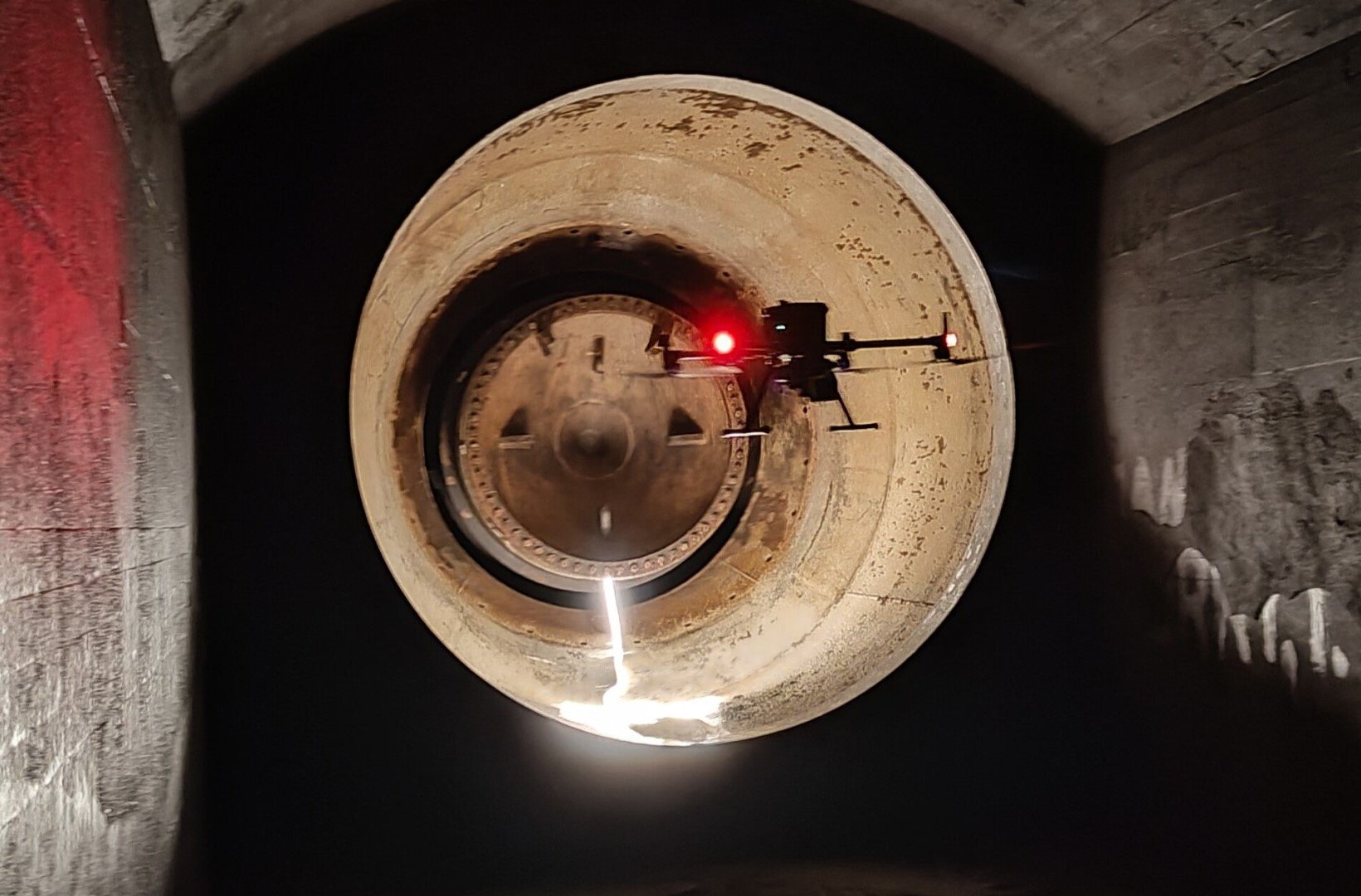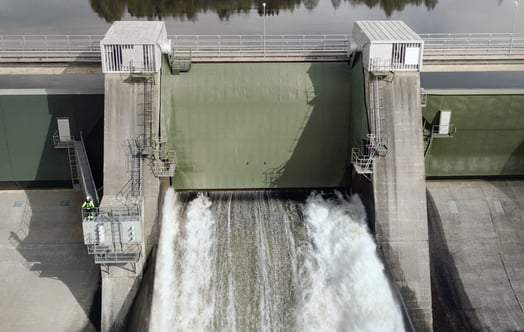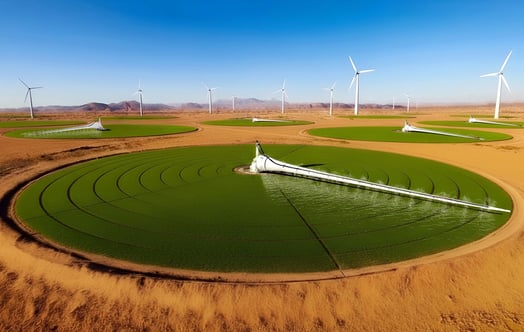The development of drones has made great strides. In Sweden, a complete hydro power station is being mapped to construct a perfect digital copy.
Joakim Smedlund looks into the steeply rising, black throat of the power plant tunnel. The buzz of the drone's electric motors grows fainter as it moves away on its mission, and soon the bluish light from the built-in laser scanner is not visible at all. The control unit Smedlund holds has no longer any function and the drone and its equipment, worth some 150,000 Euro, are engulfed in darkness.
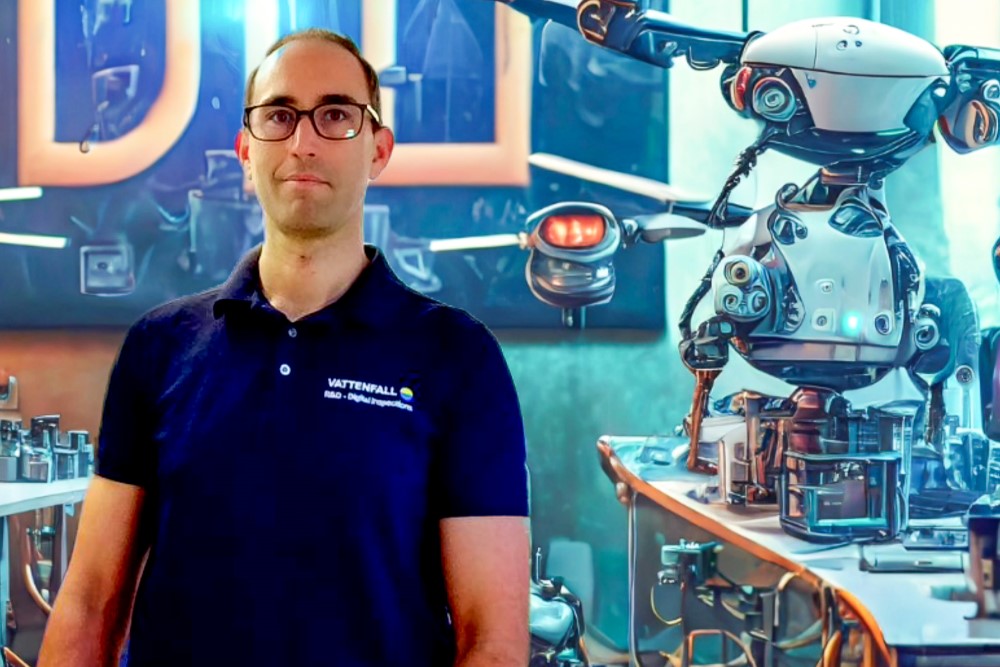
“As time passes and all radio contact with the machine is gone, you can't help but wonder if we've made a mistake and the drone lies crashed somewhere deep in the tunnel. It can take more than half an hour. But then it reappears and you can breathe a sigh of relief”, Joakim Smedlund says.
Black belt in drone flying
A lot has happened in the almost 10 years since he started working with drones at Vattenfall, where he is part of the Research & Development department's digital inspections team.
"The first models required a black belt in manoeuvring to fly, but now the technology has developed enormously," he says.
The most advanced drones are not only able to avoid obstacles, they can also independently explore an area, in this case a long hydro power station tunnel, one kilometre into the mountain. The advanced laser scanner fitted on the drone is used both to document the surroundings and to navigate. This way, the drone can be sent on expeditions all by itself for as long as the battery lasts - more than 30 minutes - and then find its way back again.
A geometric twin
Together with the rest of the team, Joakim Smedlund is at the Juktan hydro power plant in northern Sweden. The mission is to measure, scan and build a geometric digital twin of all parts of the power station.
The Juktan station is to be rebuilt and with the help of this digital geometry, the project will benefit greatly in the design phase, but also by allowing project participants to digitally visit the plant at any time. Having a digital geometric twin of the entire plant can also benefit throughout the life of the plant as changes over time can be followed up and included. The digital model is made up of a point cloud that can be navigated, much like Google Maps street views, but so precise that every distance can be measured with millimetre precision.
“This is the acid test of digital inspection technology, and we have used all the technical systems, we have found in the last few years to fulfil the needs and wishes of our clients in the hydro power department. The key here is that we combine traditional surveying methods with new methods to achieve the accuracy needed," says Anders Lindström, who leads the digital inspection team that includes himself, Joakim and around ten more people.
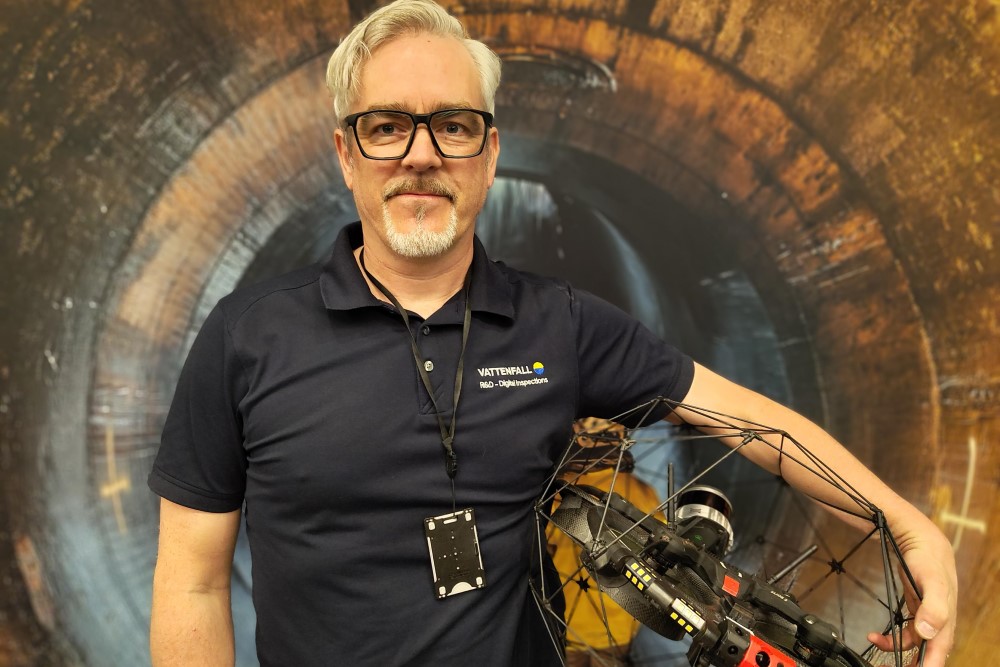
Although the technology costs a lot, it is still much cheaper than the alternative of sending people into dangerous environments and having to build stairs and scaffolding to access and inspect, as in this case, a tunnel. The same applies to inspections of other facilities, such as inside the boiler of a district heating plant, or in inaccessible areas of nuclear power plants, as has been done the past few years.
Many areas of use
Drones in all forms have become an increasingly common sight in Vattenfall's operations. They fly, swim or walk, and their efficiency makes them an important means of accelerating the transition to fossil-free energy production.
In addition to inspections in hard-to-reach and hazardous areas, they are also used to find leaks in district heating networks, to install scarecrows on power lines, and in wind power to inspect or even renovate turbine blades with a repair robot.
Ten years ago, the focus was mostly on flying drones, but today many different types are used, such as underwater drones, ROVs (remotely operated vehicle). In hydro power, they are used to inspect dam ice gratings, hatches, intakes etcetera, in offshore wind power to investigate seabed conditions and much more. At Forsmark nuclear power plant, an ROV examined a wet well, a basin placed at the bottom of the reactor vessel, to verify certain dimensions in connection with the redesign of part of the structure.
Drone dogs monitor the nuclear power plant

Another concrete project linked to nuclear operations is Spot, a dog-like drone that will soon be put to work, initially at a training facility next to the Forsmark nuclear power plant.
“Soon, Spot will be used inside the nuclear power plant, for example inside the turbine containment or other radioactive environments. There, it can patrol and make scheduled rounds, walking up and down stairs and transmitting the information in the form of video, images and measurements to a control room. Between missions, it recharges its batteries in its radiation-protected hut," explains Anders Lindström.
Safety drives development
The main task for Vattenfall’s Digital Inspections team is primarily to find technology on the world market, sift out what works and finally implement it in the various areas of operation. The team works closely with the organisation in the field with tests and live assignments.
“A major driving factor for the implementation of new technology is personal safety for our employees and contractors. An inspection of a waterway in a hydro power plant may involve someone having to be hoisted 250 metres down a shaft to take pictures and note any damage. Entering a rock tunnel means first sending in a safety team to make sure no loose rocks can fall down and injure anyone. Now we can send in a drone for an initial status assessment without anyone having to risk their life," he says.

Drones are also becoming increasingly autonomous and can be controlled from a distance. The trend is called remote sensing. Drone-in-a-box is the name of a system where the drone is deployed, for example at a remotely located power plant. There, it conducts its scanning rounds on its own and then returns to its protective box for recharging while waiting for the next mission. The operator does not even need to be in the same country.
"Currently, the regulatory side is a challenge when it comes to autonomously flying drones outdoors, but we are working hard to solve those parts," says Anders Lindström.
Intelligent drones
In addition, AI technology is developing rapidly. Many of us have tried self-learning systems like Chat GPT. AI is already being used to train robotic systems, which has exponentially accelerated progress in the field of robotics, says Anders Lindström:
"AI is used in the actual learning of movements but also allows the systems to draw their own conclusions and make rational decisions based on that. Within five years, we will work with robots around us that we can talk to and reason with. That's pretty cool. At the same time, all these new systems and technologies are collecting more data than ever before, and today's systems are struggling to cope with this, while data classification challenges are growing with the increased amount of data. This means that our big challenges lie on the IT side going forward," he says.
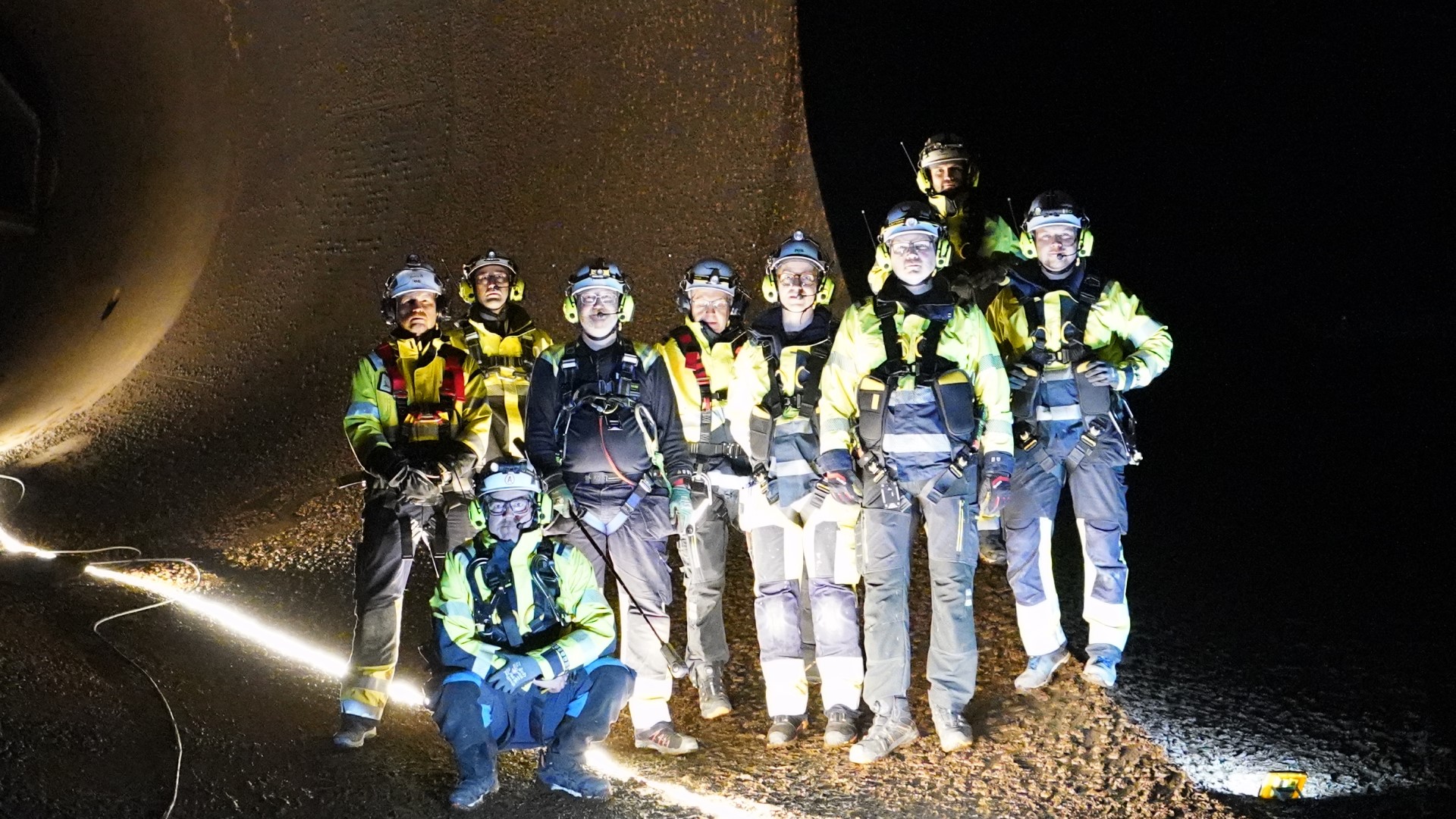 Vattenfall's Digital Inspections Team.
Vattenfall's Digital Inspections Team.
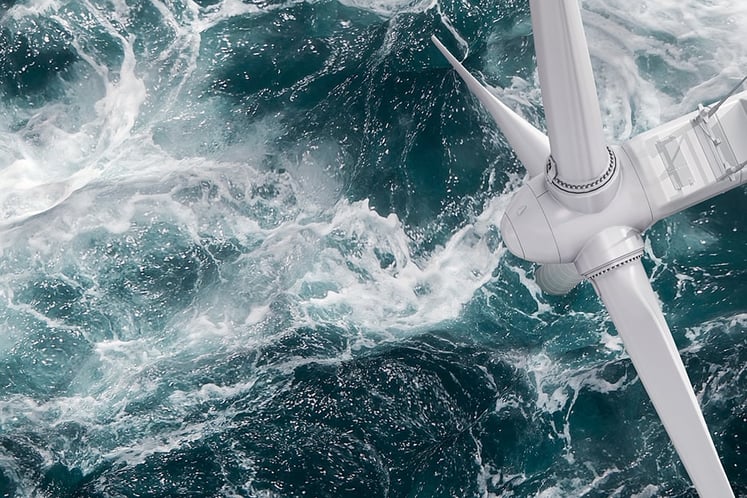
Subscribe to the newsletter THE EDIT
THE EDIT is Vattenfall's new monthly newsletter. Each issue highlights a new burning issue from the world of sustainable energy and fossil freedom.

